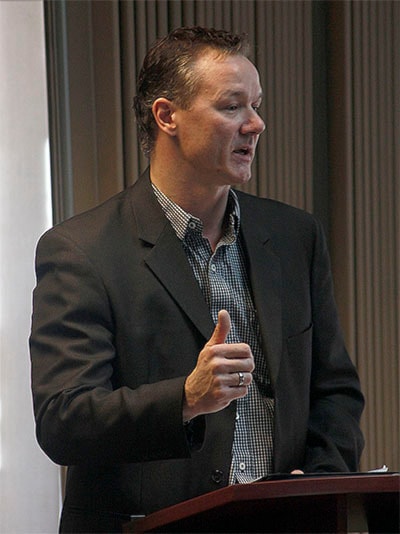There’s little FortisBC can do for customers who are struggling under two-tiered electricity rates, local politicians heard Thursday.
“The danger is making a change to try to fix something and creating a big problem somewhere else,” said Corey Sinclair, the company’s manager of regulatory affairs.
Sinclair spent an hour in front of a committee of the board of the Regional District of Okanagan-Similkameen answering questions about the so-called conservation rate, which reduced the price for energy use below 1,600 kilowatt-hours in each billing cycle, but increased the cost for consumption over that mark.
The rate is intended to encourage energy conservation and is revenue neutral for the company.
Naramata Director Karla Kozakevich said the conservation rate has greatly impacted constituents who don’t have access to natural gas and have resorted to other methods of home heating.
“What this has done, at least in my area and other rural areas, is it’s causing people to now burn (wood) a lot more, which is impacting our air quality,” she said.
Sinclair suggested expansion of natural gas service to Naramata could cut down on people’s reliance on wood heating, but Kozakevich dismissed that idea.
“I don’t see constituents paying thousands of dollars to change out their appliances to be able to handle natural gas,” she said.
Angelique Wood, the director for rural Keremeos, read from an email describing a war-veteran constituent whose power bill jumped approximately $500 during the first winter billing cycle under the new rate, which went into affect in July 2012. Wood suggested creating rate subsidies for vulnerable groups, such as veterans or people in rural areas.
“I’m just asking you to think about the fact that it’s not one-size-fits-all. We need to figure out something for the desperate ones,” she said.
Sinclair told her FortisBC’s hands are tied.
“We build our rates on costs, and that’s a regulatory and statutory requirement. So we’re not at liberty to pick one group of customers and force them to subsidize another group of customers based on an end-use or demographic attribute,” he said.
Simply raising the threshold at which power is billed at a higher cost would not work either.
“It actually has the opposite effect of what you want to do. Raising the threshold punishes the high-consumption customers even more,” Sinclair continued.
“It redistributes the impact, but it hits almost everybody when you do that.”
The B.C. Utilities Commission last month issued a response to the company’s initial report on the impacts of its conservation rate and indicated it’s “satisfied that preliminary results” show “electricity conservation and general customer impact is consistent with forecasts.”
However, the commission said it recognized concerns of highly impacted customers and asked for more information about their bills when FortisBC files its next report in November.
“So to me, that means keep those letters going in,” said Boundary-Similkameen MLA Linda Larson, who attended Thursday’s session.
“Everything that you’re people have been doing out there, keep doing. That’s my advice.”
Sinclair acknowledged that won’t satisfy customers who are struggling now, but suggested they contact the company if they have concerns.
“That’s not going to come as a lot of comfort for customers who are going through the heating season with the existing rate in place,” he said. “I know that. I’m sensitive to that.”
Other FortisBC representatives provided the RDOS with updates on two separate initiatives.
Ian Dyck, project manager for the smart meter program, said the units will be tested in the Trail area later this year before a full region-wide roll out. He said the devices would likely be installed in the South Okanagan-Similkameen in 12 to 14 months. Meanwhile, corporate services manager Bob Gibney said the company expects to begin soon the environmental assessment process for a hydroelectric dam on the Similkameen River near Princeton.
Gibney said the company expects to decide by the end of the year if the project is viable, but he noted it’s “extremely economically fragile at this point.”
